It’s hard to explain to gardeners in temperate climates, but the sheer amount of food you can grow in the humid tropics is unbelievable. Every time I visit South Florida I get climate envy. South Florida gardening can be truly amazing.
You really have to screw it up to lack food. And believe me – it does happen. There are way too many ornamentals and areas paved over with concrete and planted with inedible grasses and palms, yet if you are a gardener who will work with the climate and love to grow, you can produce insane quantities of produce.
About 12 years ago I planted a starfruit tree in my parents’ backyard. Here it is in 2013, to the lower left. It’s only about 4′ tall here.
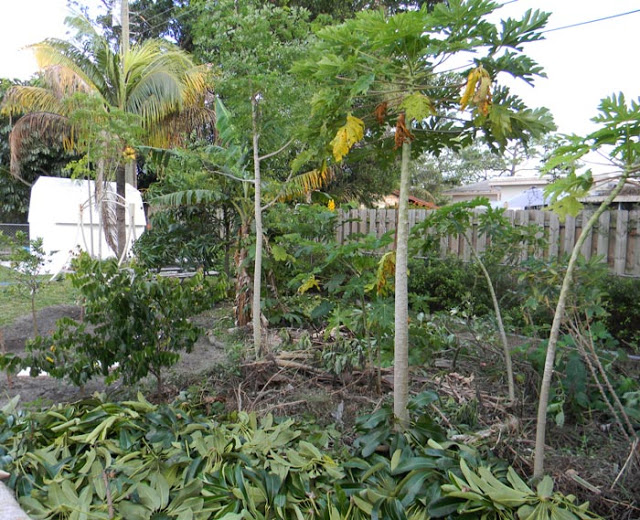
And here it is today:
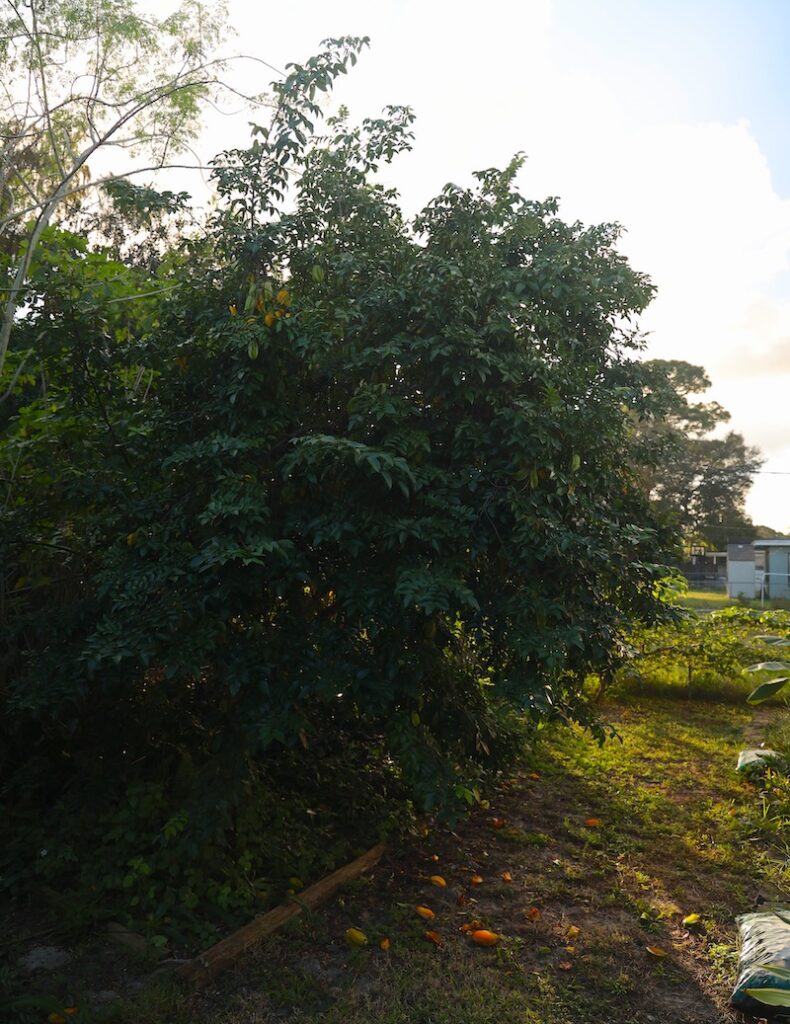
This tree is a monster, producing way more starfruit than my family can eat. They are sweet and juicy, and Mom regularly gives them away to friends.
Many others fall to the ground and are re-absorbed into the soil.
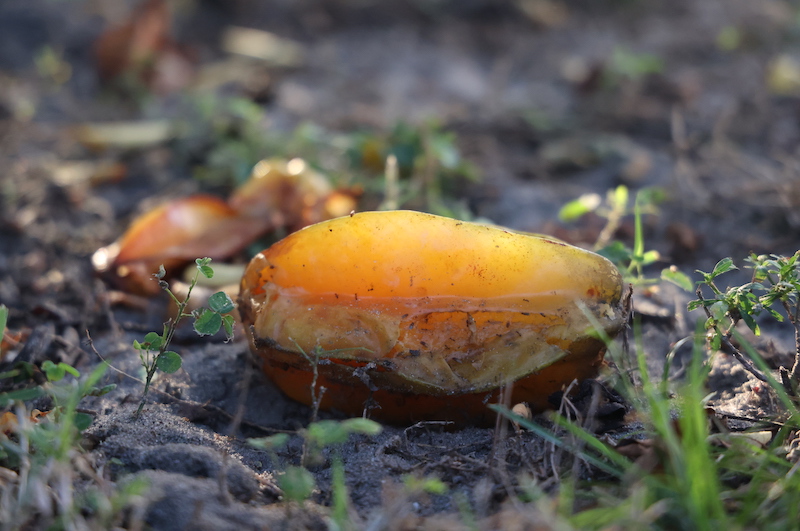
Is this a waste?
Well, maybe in a sense, in that no person gets to enjoy the fruit that fall and rot. But in another sense, it isn’t, as the fruit feeds the soil, the insects and the worms. Also, these fruit are the result of the rain and sunshine God sends in abundance. If you want to take it down to the numbers, the tree originally cost me $35. Since then it has produced literally tons of fruit which has been enjoyed by many, many people. Baskets have been eaten and baskets have been given away.
My sister Rachel told me today that starfruit sell for $1 each where she lives in Georgia. Down in South Florida, I bet it’s about the same, maybe a little less. If you were to calculate the value of the fruit we’ve eaten over the years, it must be at least $2000 so far, and the tree should have many years in front of it.
And then when you look at the other trees in this system, some of them have been real champs. The mulberries are abundant, the moringa are always producing new crops of leaves, the katuk is a a huge mess of greenery, the mango tree is ridiculously overfilled with fruit, and there are yams everywhere.
In a tiny little South Florida yard.
But just the starfruit alone is a testament to what can be produced in the sand, provided the climate is frost-free year round.
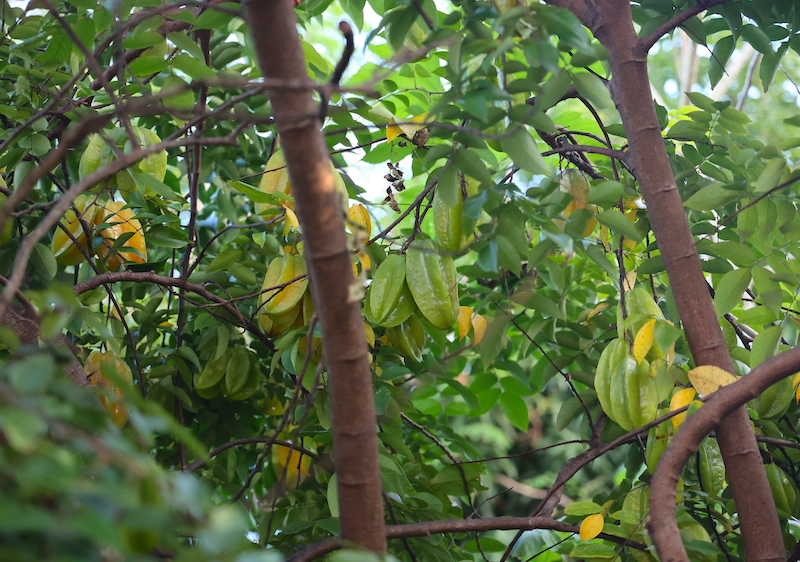
And not only is it abundant, it’s beautiful.
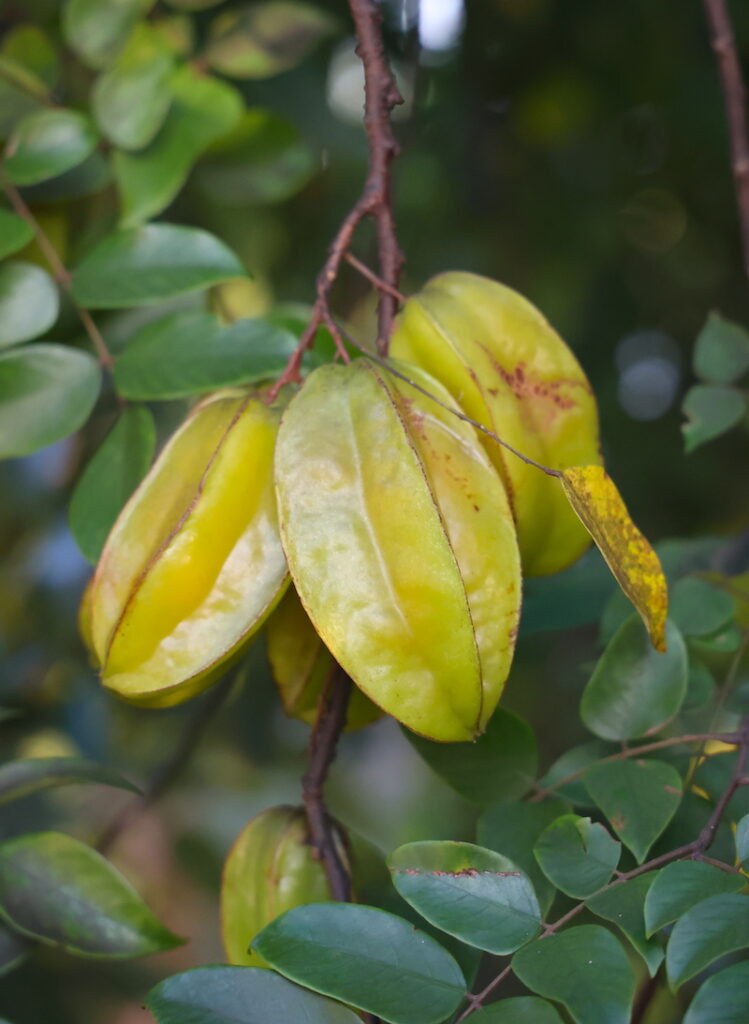
I absolutely love starfruit and how the semi-translucent fruit hang like Chinese lanterns on graceful nut-brown branches.
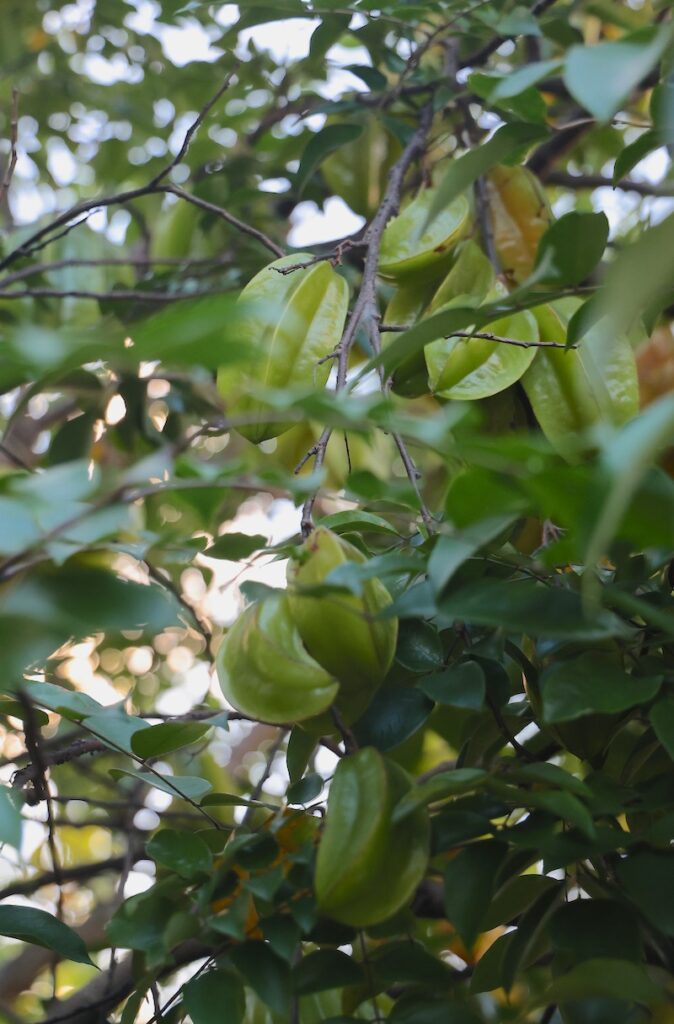
When I was in Grenada I remember people on YouTube saying, “whoa – there are so many mangoes on the ground, just rotting away! You need to can them!”
It’s hard to believe it, but you really cannot keep up with fruit in the tropics. There’s always more, poured out from Heaven in insane abundance. By the time you finished canning the first round, you’d have another thousand pounds of something else to can. You’d really never even end up getting around to EATING what you can, since there’s always more fruit coming in season.
You just enjoy what you can pick as the seasons change, and learn to not worry about saving all the extra. Sure, it would make sense to get a pig or chickens or something to turn the abundance into meat, but still – there’s so, so much!
I wish I could get everyone in South Florida to at least grow one edible fruit tree. Maybe they’d catch the bug and plant more after that. Next thing you’d know, there would be food in such abundance you wouldn’t need to import any.
It’s a dream. Every time I visit and see the green lawns and trimmed, inedible hedges, I imagine what could be done. Maybe one day it will.
If you live down south and haven’t figured out how to garden yet, you’ll enjoy reading The South Florida Gardening Survival Guide. You can’t beat the potential productivity, once you know what you’re doing.
If just one starfruit tree is worth thousands in fruit… imagine the value of a small tropical garden or food forest! The abundance of the tropics is open to you. Will you seize it?

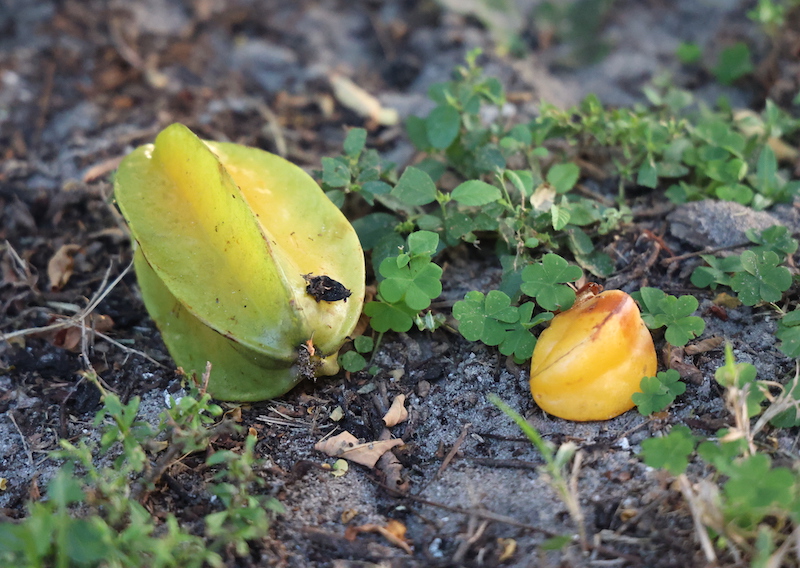
5 comments
I am not in the tropics. I am not in South Florida. I am in central Texas 8B. My Moringa freezes back to the ground every year. But I keep trying. I may get mulberries in the spring. I am very glad to get to read your reports. Keep working towards survival.
I live in Southwest Florida. I love every second of it! I have a garden, I have fruit trees and bushes. I love it here. The only down side is the occasional Hurricane and we are still trying to get over Ian. I do love my ornamentals too though. I’m out in the yard every single day until about three or four depending on the season. I’m going to be expanding my fruit trees this year!
“You need to can them!”
And that’s how you know that they and all their ancestors lived anywhere that food didn’t fall off the trees year ’round.
Right. There’s definitely a genetic/cultural component. We noticed that very few people thought much about the future down in the tropics.
I live in Central Florida and have an established Carambola (Star Fruit) tree. Very prolific grower with an abundance of fruit each year. Very drought & wind tolerant fruit tree as well as being a beautiful & reliable shade tree. I cut it back to about 1/2 it’s height every couple of years and it grows back and has never missed a season of providing an exceptional harvest. Learning how to CAN fruit is on my bucket list but for now, I use a dehydrator. Dehydrated star fruit is fantastic and I sprinkle some of the batch with cinnamon. Makes a very tasty treat! I have a massive mango tree which I have hired tree trimmers to cut back twice in recent years. Both times I lost a season of fruit but on that second year the harvests were larger than previous years have ever been and the size, quality & taste of the fruit has been exceptional. Mangoes that taste like honey! This tree is also drought & wind tolerant and is the biggest and best shade tree in the yard! Finally David, I want you to know that I have two Florida Mohagany trees! One was planted about 25 years ago in the dry, scrub habitat I reside in on the Lake Wales Ridge on some vacant land I own across from my home. It was about 3 ft tall when I put it in the ground & watered it for the first two weeks and that’s it! Never pruned, Never fertilized and the only water it gets is from Mother Nature … just let God take the lead. Beautiful kinda pear shaped canopy that it designed itself, unlike the Mother tree it came from (which was massive like the one in a video you posted on YT). This tree is now, I’d say about 30 feet tall. Two years ago I finally found a sapling and dug it up. I put it in a five gal. pot, nurtured it through the winter, watched it grow from 14 inches to 3 feet. I planted it in the ground in late Spring and staked it, watered it and protected it during the 2022 hurricane Ian. It survived and is now about 6 feet tall. I grew up in South FL with a huge Mohagany tree in our front yard. Both of these trees are descendants of that tree. I can’t wait for this one to grow big and provide beauty & shade to the front yard. And yes, I know all about the seed pods they produce (I call them hand grenades) and hope to be able to get some seeds started for great grand baby trees in the future. Thanks for sharing so much of your knowledge.
Comments are closed.